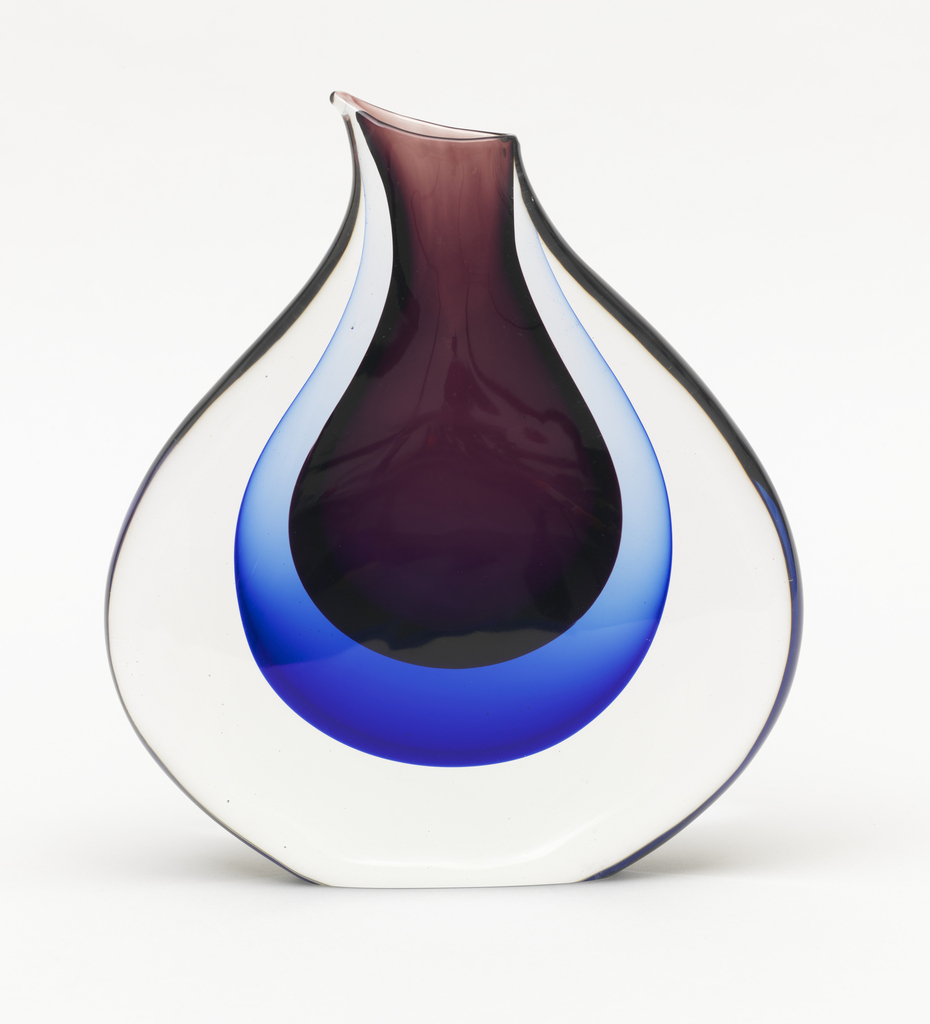Although this vase exemplifies a mid-twentieth century organic style of modernism, it comes from a glass factory with a long tradition of using historical production techniques, located on the island of Murano in Venice, Italy, an important glass-blowing center since the middle ages. In the mid-nineteenth century, Italian lawyer Antonio Salviati developed an interest in glass after becoming involved with the restoration of mosaics in Venice’s Saint Mark’s Cathedral. He went on to co-found glassworks that produced mosaic glass used to decorate the interiors of European and American churches and civic buildings. A few years after his mosaics achieved success, Salviati started the firm of Salviati and Company to re-invigorate Venice’s flagging art glass industry. Employing many skilled artisans to mass produce glassware, particularly for the export market, Salviati and Company revived traditional working methods and often looked to Renaissance vessel forms and glassworking techniques for inspiration.
The company prospered and continued well into the twentieth century, adapting ancient techniques for a modern aesthetic. The firm’s artisans used a technique called casing to create the bold form of this modern vase, in which dense passages of pure color—azure blue and smoky purple—appear to float weightlessly in a bubble. Successively thick and heavy layers of molten glass, starting with purple in the center, then blue, then the clear glass of the outer layer, were gathered and blown to form a roughly oval, shallow vessel. The form is reminiscent of a flattened gourd, suggesting that it grew organically rather than being crafted by hand. Light passing through the transparent layers seems to intensify each color, accentuating the curved form and the material’s brilliance.
Cynthia Trope is the Associate Curator of Product Design and Decorative Arts at Cooper Hewitt, Smithsonian Design Museum.
